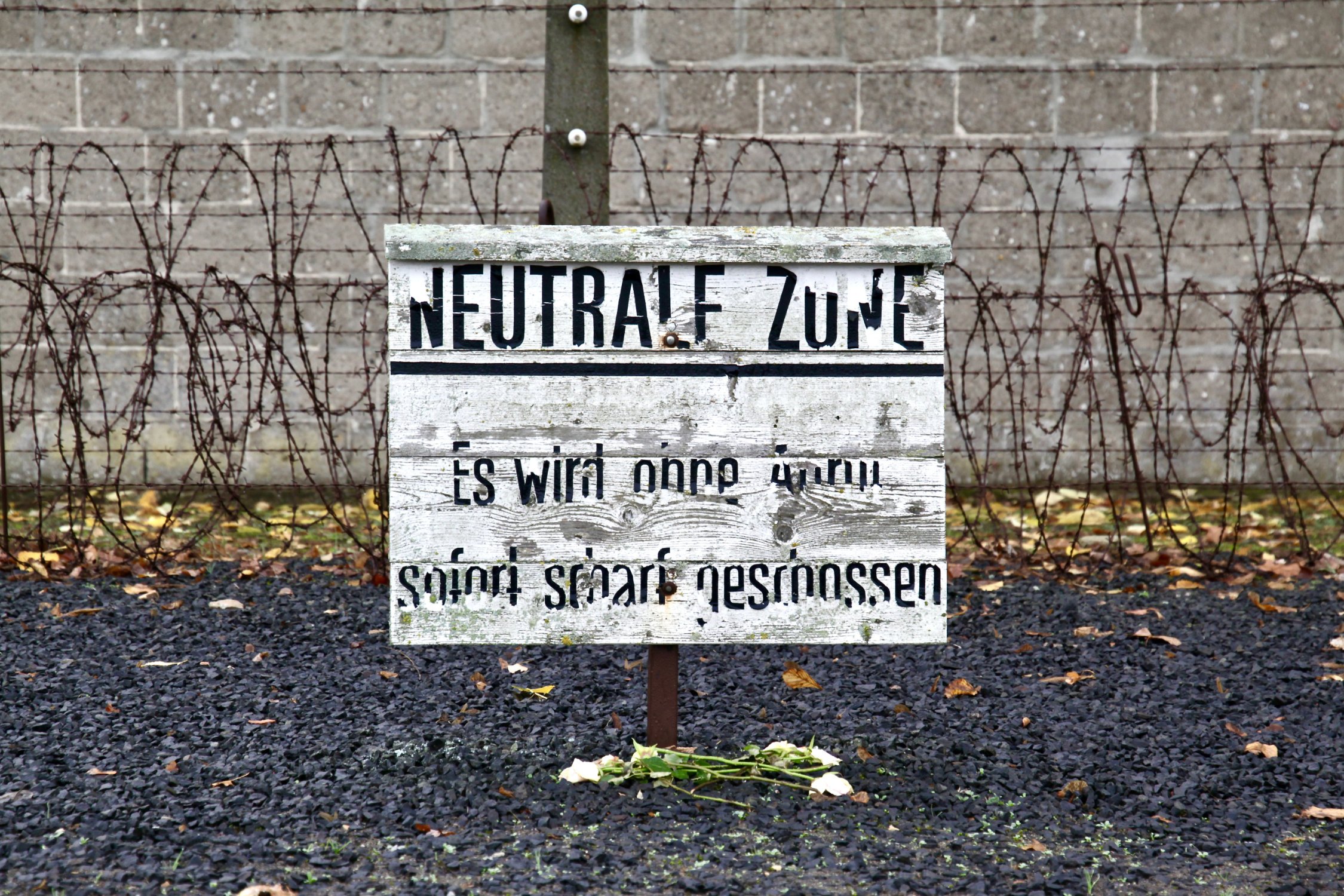Explore Berlin's Dark Past: A 5-Day Itinerary of Nazi and WWII History
Ready for 2024!
The Kaiser Wilhelm Memorial Church, hit by a British bomb in 1943
If you’re interested in WWII history there’s no place to visit that’s quite like Berlin. There are countless museums, monuments, and hidden locations to visit. I haven’t seen them all yet, and I’ve been in Berlin since 2010!
This 5-day itinerary focused on Nazi and WWII history provides visitors with plenty to explore. From tours and museum visits to self-guided walks and memorials to the victims of the war.
Explore a city that has risen from the ashes of war to stand as a beacon of resilience and reconciliation, discover famous sights, hidden gems, walk the paths of history, and immerse yourself in the stories that shaped the world.
…and still make time for beer gardens and schnitzel!
See the Reichstag, where a 1933 fire helped propel the Nazis to power
Day 1: Introduction to Berlin and the Rise of the Third Reich
Guided Walking Tour of WWII and Third Reich Berlin
Start with a comprehensive guided walking tour that covers key historic sites from the Weimar Republic to the rise of the Nazi regime, including the Reichstag, Brandenburg Gate, and the site of Hitler's bunker. This will provide a solid foundation for understanding the city's complex history.
I’ve got three ways for you to explore the heart of the former Nazi government district:
Listen to my audio tour
Follow this self-guided walk
Topography of Terror Museum Visit
Explore the Topography of Terror, located on the site of the former Gestapo and SS headquarters. The museum offers a detailed look at the mechanisms of Nazi state terror. What I like about this museum is that it dispels the myth of the Nazis being efficient. The museum gives you a look at the most powerful people under the dictatorship, all of them ready to stab the next guy in the back to climb the ladder: they were ruthless, not efficient.
“Neutral Zone: Shots Fired Without Warning” - The camp fence at Sachsenhausen
Day 2: Concentration Camp Memorial Visit
Sachsenhausen Concentration Camp Tour
Now that you’ve visited the memorials for victims of the Nazis and seen where the leaders had their offices, it’s time to look into just how brutal the dictatorship was.
Sachsenhausen Concentration Camp, just outside Berlin, is made of several separate museum buildings in the original style and location of those used at the camp. The informative, decentralised design can be a bit confusing, leading visitors to not know where to head next. Therefore, I recommend picking up the audio guide or booking a guided tour. Going with a guide also means you don’t have to navigate the train system alone.
A visit to Sachsenhausen offers insights into the camp's history, the daily lives of prisoners, and the broader context of persecution under the Nazis. It’s a sobering experience that sheds light on the human cost of the regime.
You can also book a private tour of Sachsenhausen with Whitlam’s Berlin Tours.
Headed to Sachsenhausen on your own? Read this guide on how to get there
It can be a bit tricky taking the train out to Oranienburg for the first time. Click here for my tips on how to get there and back.
Day 3: The War Years in Berlin
See where Nazi Germany surrendered at the Karlshorst Museum
The Karlshorst museum is located at the site of the German WWII surrender on May 8, 1945. It offers an in-depth look at the Eastern front, and includes many fascinating artefacts, including uniforms, machine guns, tanks, and propaganda posters.
The museum is a former Nazi officers’ training school. The whole area, formerly used by the German military, was used by the SMAD (Soviet Military Administration Germany/Deutschland) after the war.
FYI: the museum used to be called the “German-Russian Museum” and the “Capitulation Museum”.
Explore the invincible WWII Flak Tower
"Tour 2: From Flak Towers to Mountains of Debris" by Berliner Unterwelten presents a deep dive into the remnants of World War II's aerial defences. Berlin’s 3 huge ferro-concrete flak towers were rightly feared by WWII’s brave pilots - all 3 survived the war intact! Now one has been removed, one’s covered up, but one is open to visit: but only on a tour with Berliner Unterwelten.
The tour covers the technical and military significance of these fortifications but also reflects on their post-war legacy. Through this experience, you'll gain insight into the architectural and historical impact of war on Berlin, showing you just how much evidence of the war still surrounds us in Berlin.
Want more Berlin tips?
Join more than 70,000 followers on Instagram, Twitter, and TikTok for the latest Berlin tips and history videos
Brass “stumbling stone” memorials line the streets of Berlin and many European cities
Day 4: Resistance and Remembrance
German Resistance Memorial Centre
One of the sad truths about Hitler’s reign is that most people let it happen. Sure, there were many enthusiastic participants, but most people watched it happen. There were a very brave few though who stood up and resisted. Almost universally they paid the ultimate price. This museum tells their stories.
Focus on the efforts of those who fought against the Nazi regime from within. This center documents the various forms of resistance and opposition to Hitler's rule.
Discover the ‘Stumbling Stones’ in Berlin’s Jewish Quarter
Berlin’s Jewish quarter has a rich history dating back to the 17th Century. When the Nazis came to power there were an estimated 160,000 Jews living in Berlin. The vast majority of them would no longer be here by 1945; whether they were deported, murdered, or forced to flee. Today, we can walk the streets where they used to live and learn about Berlin’s vibrant Jewish past, and visit memorials to those that became victims of Hitler and the Nazis
As you walk these historic streets occasionally you’ll notice a shine or sparkle on the ground. These are the “Stolpersteine”, or "stumbling stones"; small brass plaques embedded in the pavement in front of the former homes or workplaces of victims of Nazi persecution. Each stone begins with "Here lived/worked" and includes the individual's name, birth date, fate, and dates of deportation and death, serving as a poignant reminder of the lives disrupted and destroyed during the Holocaust.
Cecilienhof Palace, where the Allied commanders held the Potsdam Conference after WWII
Day 5: The Aftermath and Rebuilding
Cecilienhof Palace: see where Churchill, Stalin & Truman met for the Potsdam Conference
The final Allied conference was codenamed “Terminal”. It was supposed to be held in Berlin, but the destruction from both bombs and the Battle of Berlin at the hands of the Red Army meant that it simply wasn’t possible to find a location that was either intact or safe enough to house President Truman, Winston Churchill, and Soviet leader Joseph Stalin.
Instead, they picked the untouched Cecilienhof Palace. Abandoned by Germany’s former royal family only days before, the “Big Three” would meet here in the Summer of 1945 and hash out a deal on how Europe would look in a post-WWII world.
The museum’s audio guide is top-notch, and includes a visit to the Great Hall where the huge round table still sits. You also visit Stalin, Truman, and Churchill’s personal rooms, but the place where they took *that* photo isn’t marked. It was here, by the way.
Discover life in occupied Berlin at the Allied Museum
Learn about the role of the Allied forces in the defeat of Nazi Germany and the subsequent division of Berlin. The museum covers the Cold War era and the eventual reunification of Germany.
There’s a huge section on the Berlin Airlift, but my favourite part is walking through a section of the “Operation Gold” tunnel.
Find out more about the Allied Museum here.
The Berlin 1936 Olympic Stadium is darkly impressive
Even more Berlin Third Reich & WWII Historical locations to explore
Think you can cram in even more? Try these on for size.
The 1936 Olympic Stadium
The impressive stadium is still in use today. If you want to go and explore the history make sure you’re not there on the same day as a Depeche Mode concert or a Hertha Berlin game!
The House of the Wannsee Conference
On the 20th of January 1942, Reinhard Heydrich lead an 85-minute meeting where he and a group of fellow Nazis planned what they called the “Final Solution to the Jewish Question”. The minutes from the meeting tell the story at this excellent museum.
The Seelow Heights Museum
Spring 1945, the Soviets have moved quickly through Germany. The rapid collapse of the Wehrmacht is halted only by the river Oder. After crossing the river, the Red Army, lead by Field Marshal Georgy Zhukov, smash through 9 lines of German defence in the largest battle to ever take place on German soil, the battle of Seelow Heights.
The museum feels like a relic from the East German days, when celebrations would take place on the anniversary of the battle. It’s surely been updated since then, but it’s got a quaint feel to it.
Bunkerstadt Wünsdorf
As the former headquarters of the German Wehrmacht and later the Soviet military in East Germany, this sprawling complex holds a wealth of historical significance. Wander through ruins, bunkers, command centres, and communication facilities that once played a pivotal role in shaping the course of World War II.

























